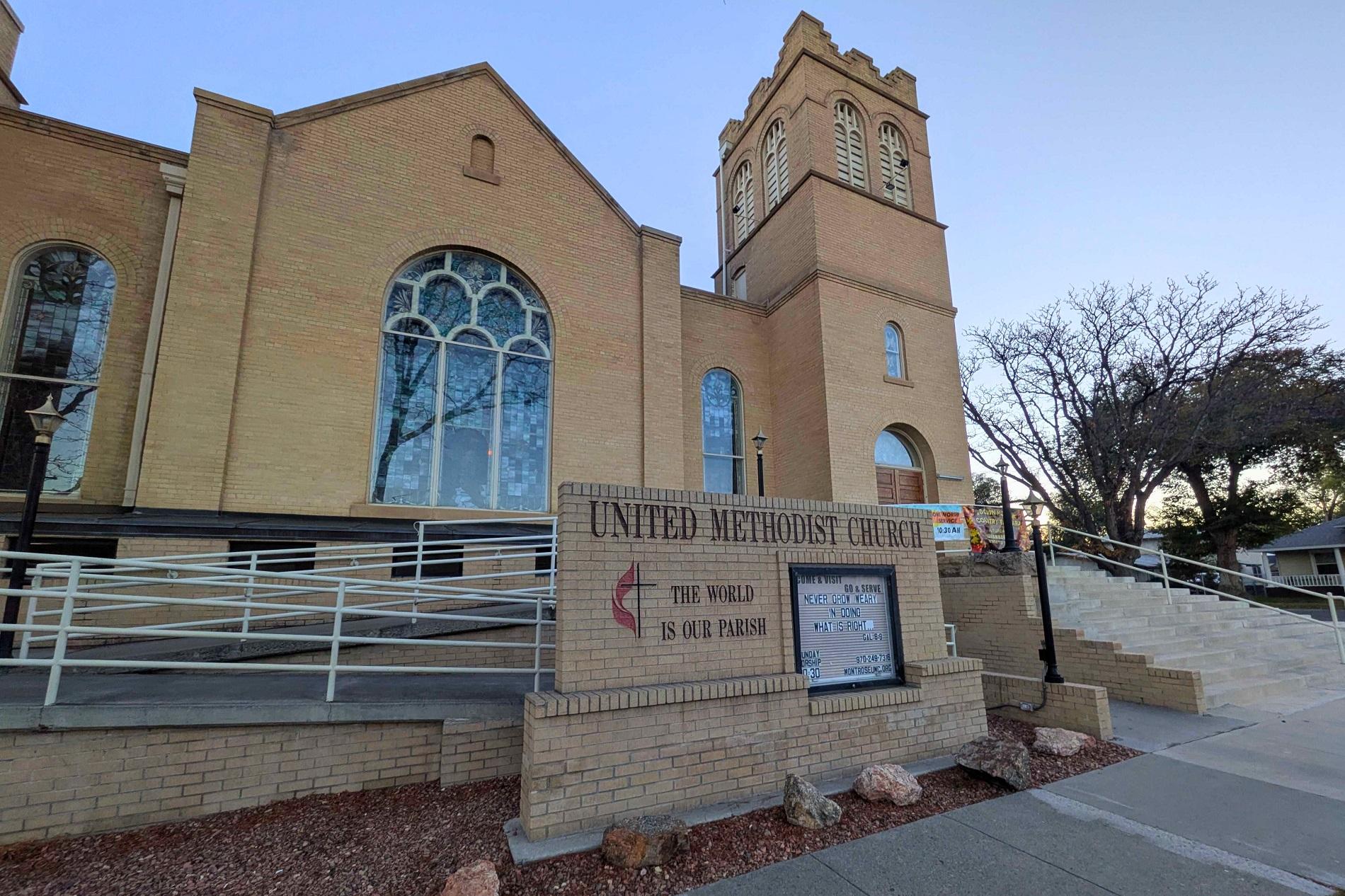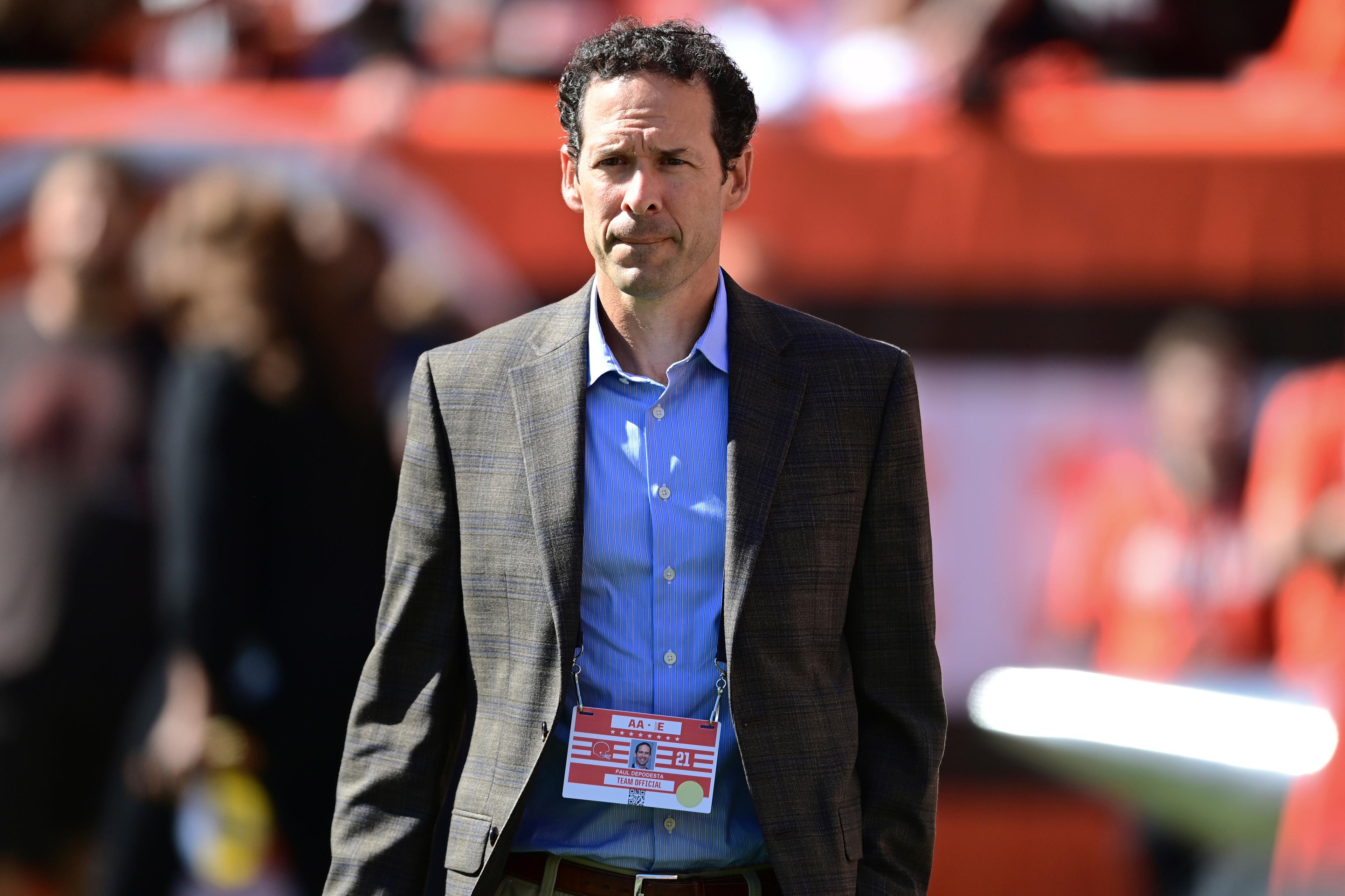

"I suspect that there is a great sadness everywhere in the country today among sports lovers," said sportscasting legend Howard Cosell on the day Freddie Steinmark died.
It was 1971, and Steinmark, one of the most famous high school athletes in Colorado history, had succumbed to cancer at age 22. The news was noteworthy enough that President Richard Nixon called the young man's parents to offer condolences.
Steinmark played football for the University of Texas and, before that, for Wheat Ridge High School outside of Denver. In a new biography, Steinmark's childhood friend and teammate at Wheat Ridge explains what made Steinmark so special, and how he inspired the national "War on Cancer" in the early 1970s.
Bower Yousse spoke with Colorado Matters host Ryan Warner about the book he cowrote with Thomas J. Cryan, called "Freddie Steinmark: Faith, Family, Football." A feature film about Steinmark comes out in November, called "My All American."
Read an excerpt:
Excerpt and photo from Freddie Steinmark: Faith, Family, Football by Bower Yousse and Thomas J. Cryan (Copyright © 2015 by FJS Productions Inc.), used by permission of the University of Texas Press. Football is a team sport. Freddie always was first to say so. No matter how well he played, he would tell you he could have played better, and he would always praise his teammates. He wasn't just saying those things. He believed them. In a game of inches, every single decision, every individual effort, combined to make the difference. On Friday night, October 7, 1966, an overflow crowd of nearly ten thousand people watched the Wheat Ridge Farmers play the Lakewood Tigers--two great teams that brought together, for a few hours, two great communities. But the night belonged to a single player who, no matter what he said afterward, could not have played better. In front of the roaring crowd, along with a slew of local and statewide reporters, the Wheat Ridge Farmers and the Lakewood Tigers streamed onto the field. From the get-go, the Tigers seemed to be in control of the ground game, but a series of heads-up defensive plays led to a Tiger fumble in the first quarter, and we took advantage of the possession. After a solid run by Freddie, the Farmers found themselves in scoring position. Our quarterback, Roger Behler, threw an incomplete pass on his next attempt, but then came a crucial connection with Freddie once again. As one reporter wrote, "[Behler's] pass slipped off the fingers of Lakewood defender Ted Dill and into the waiting arms of the ever-present Steinmark on the one [yard line]." A quarterback sneak put the ball in the end zone, and the Farmers were on top of the Tigers. The Tigers responded with a bruising drive that covered sixty-eight yards in thirteen running plays that shredded the right side of the Wheat Ridge line and ended with a Lakewood touchdown. The Farmers might have been put on their heels by that drive, but we certainly were not beaten. After a dramatic back-and-forth series of drives and stalls, we pushed our way back down the field with a balanced attack. This time, Bobby Mitchell took the ball and punched through the line to put Wheat Ridge up 13–7 at halftime. The second half of the game was possibly even more physical than the first. Lakewood put together another one of its punishing ground attacks, covering sixty-four yards on rushing plays before driving once again into the end zone to tie the score at 13. Each team threw everything it had at the other. At the end of the third quarter, Lakewood once again took control of the ground game and began another merciless drive toward the Farmer end zone. Near midfield, the Tigers had a third-and-one to keep their drive going into Farmer territory. That was when Wheat Ridge's Gary Fallico came up with what Coach Coats would later call the "key play of the game." Jerry Williams, the Tiger halfback, took a pitchout and swung left, a play that had worked against the Farmers several times already, but this time Fallico flashed through the offensive line and was able to drop Williams in the backfield for a loss of four yards. It was an incredible stop, and it came at a critical moment. The Tigers elected to punt and put Wheat Ridge back on offense. In the fourth quarter, both teams were beginning to show signs of wear and fatigue. This was the exact moment that we had been training for under Coach Coats. This was the exact moment that Big Fred had preached about. This was the moment that Freddie dreamed of when he did his final series of wind sprints or his last set of reps on the weight bench. This was the moment when Roger Behler faked a handoff to Bobby Mitchell and then planted the ball squarely in Freddie's stomach as Freddie shot toward the right side of the line and burst through an opening. What came next has become the stuff of Wheat Ridge legend. Freddie raced toward the right sideline, and just when it looked as if he were going to be smothered by at least five defenders, he cut back, running directly into them. Again, it looked like an impossible situation, but somehow he wove through them like a whirling dervish. One after another the Tigers lunged and missed. A series of key blocks by scrambling Farmers helped Freddie keep the run going, and the crowd came to its feet, sensing something remarkable. Freddie cut and juked and kept going, racing all the way back across the field toward the opposite sideline. The roar of the crowd grew louder and louder with every yard he gained. The entire stadium was in a frenzy. Could he do it? Could no one really stop him? The next morning Irv Moss of the Denver Post put it like this: "If you've ever swatted at a fly with your hand, you know what the Lakewood High School football team faced when it tried to stop a 77-yard touchdown run by Wheat Ridge's Fred Steinmark that whipped the Tigers." Dave Dirks came up with the last critical block near the goal line, and Freddie soared into the end zone to put the Famers up 19–13. It was the final score of the game, and the Wheat Ridge crowd went crazy. By the next day, the whole state was abuzz with the story of Freddie's run and the upset of the Tigers. "Look, Fans, Look, See Freddie Run!" exclaimed one headline. The article went on to say, "It had been billed as the game of the year and when it was over no one was saying it was anything less. The Wheat Ridge Farmers ended the 24-game Jefferson County League winning streak of Lakewood 19–13." The nightly television sports shows replayed Freddie's run several times. It seemed as if people just couldn't get enough of it. The Rocky Mountain News did a half-page diagram with a black zigzag line marking his course from one side of the field to the other, and all the blocks that Freddie's teammates made along the way. A full week after the game, the Post's Irv Moss wrote an article headlined "Steinmark Feats Still Talk Topic." "Every chance he gets," the article began, "Fred Steinmark brings his teammates into the conversation for praise when discussing Wheat Ridge's 19–13 triumph over Lakewood in Jefferson County League play last weekend. However, there is no denying the 160-pound halfback had a remarkable night against the Tigers." Lakewood coach Hancock, removed from the glare of the lights, was also featured in the papers, "mentally poring over the plays that spelled defeat. . . . 'We let him get outside once all night,' he said quietly, 'and that did it. Otherwise it would have been an old-fashioned Mexican stand off out there.'" The article continued: "The 'him' Hancock spoke of was Farmer halfback Fred Steinmark, who broke the backs of a rugged Lakewood team with a dazzling 77-yard run from scrimmage for Wheat Ridge's third and deciding touchdown." The sportswriters couldn't get enough of the young phenom. One article carefully broke down Freddie's running style: "What Steinmark has is not great speed but rather a style of running that gives the impression that his body is going in several different directions at once. Coats says it is something you can't teach a player. It is a natural, instinctive thing." What none of the reporters knew about, however, was the exchange between Coats and his quarterback, Behler, during a Wheat Ridge time-out just before Freddie's great run. Behler ran to the sideline to consult with the coach. The bands were blaring, and the screaming and shouting of fans was so loud that it was hard for Behler and Coats to hear each other. "What play should we run, Coach?" Behler shouted. In addition to the dazzle of Freddie's well-publicized run, his stats on the night were equally impressive: on offense, he contributed 116 of the 140 total yards rushing and caught one pass for 14 yards. On defense, Freddie came up with an incredible 15 tackles, plus an interception. All in all, a remarkable effort, and to Coach Coats's credit, he realized that when push came to shove, Freddie was his most dangerous weapon on the field, and he let Freddie shine. That night, just before midnight, Freddie, Kent, GiGi, and GiGi's friend Anne Sanzalone were seated in a booth at Jenny's Pizzeria in Wheat Ridge, a popular place with the Farmer faithful, especially this night. GiGi was so proud of her brother, but couldn't imagine how much pain he must have been in: his face was bruised and swollen, and she thought it looked as if he had black eyes. He also seemed to be nursing a sore hand. Kent's hands, too, were swollen. She kept careful watch on the clock on the wall behind the cash register. At exactly midnight, she motioned to a waitress that they were ready to order. It was finally Saturday. Freddie could eat meat. |









